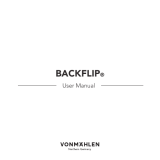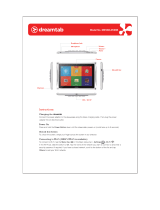3
Battery charging
Battery Charging
Notes for charging your phone's battery:
•
When charging your battery, keep it near room temperature. Never expose
batteries to temperatures below 0°C (32°F) or above 45°C (113°F) when charging.
•
New batteries are not fully charged.
•
New batteries or batteries stored for a long time may take more time to charge.
•
Motorola batteries and charging systems have circuitry that protects the battery
from damage from overcharging.
Specific Absorption Rate (ICNIRP)
SAR (ICNIRP)
Your model of wireless phone meets international
guidelines for exposure to radio waves.
Your mobile device is a radio transmitter and receiver. It is designed not to exceed
the limits for exposure to radio waves recommended by international guidelines.
These guidelines were developed by the independent scientific organisation ICNIRP
and include safety margins designed to assure the protection of all persons,
regardless of age and health, and to account for any variations in measurements.
The guidelines use a unit of measurement known as the Specific Absorption Rate
(SAR). The ICNIRP SAR limit for mobile devices used by the general public is 2 watts
per kilogram (W/kg), and the highest SAR value for this mobile device when tested at
the ear is 0.78 W/kg. As mobile devices offer a range of functions, they can be used in
other positions, such as on the body as described in this guide. In this case, the
highest tested SAR value is 0.42 W/kg. The tests are carried out in accordance with
international guidelines for testing. The SAR information includes the Motorola testing
protocol, assessment procedure and measurement uncertainty range for this product.
As SAR is measured using the mobile device's highest transmitting power, the
actual SAR of this mobile device while operating is typically below that indicated
above. This is due to automatic changes to the power level of the mobile device to
ensure it only uses the minimum level required to reach the network.
While there may be differences between the SAR levels of various mobile devices
and at various positions, they meet the governmental requirements for safe
exposure. Please note that improvements to this product model could cause
differences in the SAR value for later products; in all cases, products are designed to
be within the guidelines.
68004118002.fm Page 3 Wednesday, February 24, 2010 11:58 AM





















